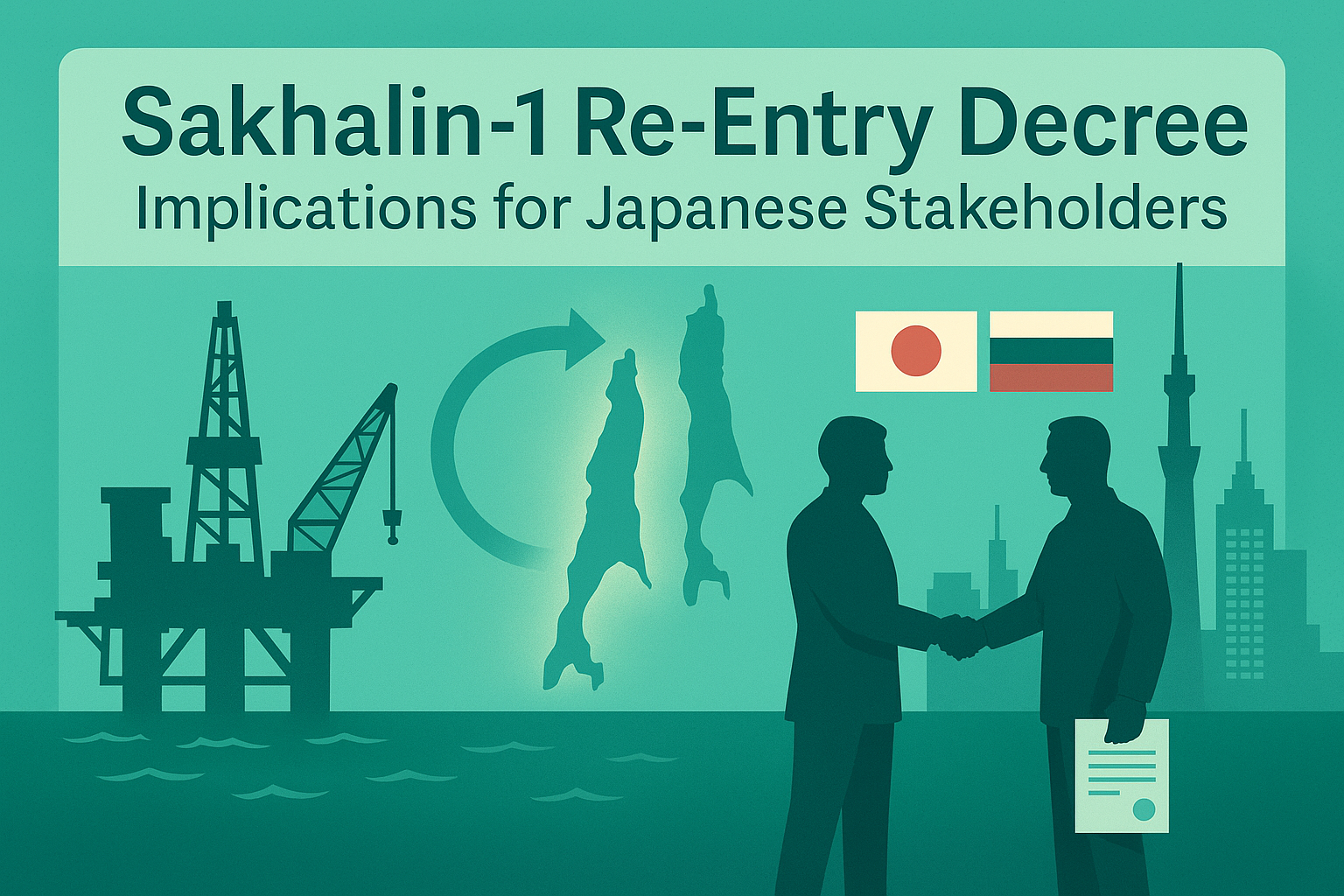Wrote:Global Economist
(Issued on Aug 15 alongside the Alaska summit context)
Executive Summary
On August 15, President Vladimir Putin signed a decree creating a legal pathway for foreign shareholders to re-enter Sakhalin-1—subject to strict conditions: contributing to sanctions relief, arranging foreign equipment/technology, and funding the project. For Japanese stakeholders (SODECO consortium), existing equity remains, but governance, operations, compliance exposure, and cash-flow realization could shift if any former partner returns. Near-term execution hinges on Western export-control/finance rules; baseline outlook is paper opening, practical constraints.
Background
- Operatorship moved in October 2022 to a new Russian entity affiliated with Rosneft.
- Japanese SODECO (~30%) and India’s ONGC (~20%) remained; Exxon’s former 30% has been in limbo with a sale deadline extended into 2026.
- Output has been constrained by technology and parts bottlenecks, logistics, and finance/insurance frictions.
Key Development (15 August Decree)
- Re-Entry Conditions
- Actions that help lift or ease sanctions.
- Contracts to supply foreign-made equipment/services/technology.
- Funding into the project entity.
- Signal Value: Positions Moscow as open to investment/technology while shifting the burden to Western policy changes.
Implications for Japanese Stakeholders
Governance and Operations
- Current Japanese equity remains; any foreign partner’s return could rebalance decision rights and improve technical access (extended-reach drilling, turbomachinery, control systems).
Compliance and Legal Exposure
- The decree’s core conditions sit inside G7/EU/US controls. Each contemplated step (equipment, software, services, payments) must be mapped to licensing and sanctions rules to avoid secondary-sanctions risk and reputational damage.
Cash-Flow Realization
- Better uptime may lift distributable cash, but banking rails, currency options, insurance/P&I, and documentation chains will determine whether paper profits convert to cash.
Energy Security
- If technical choke-points ease, offtake stability to Japan could improve at the margin; absent policy changes, improvements are likely incremental rather than structural.
Scenario Analysis
- Baseline — Paper Opens, Reality Crawls
Sanctions remain; limited third-country parts/services; gradual efficiency gains without structural change. - Optimistic — Targeted Relief & Parts Flow
Narrow tweaks to export controls/finance/insurance enable maintenance parts and services; uptime and throughput improve. - Adverse — Backlash & Tighter Enforcement
Tougher secondary-sanctions and stricter insurance/banking guidance constrict equipment and cash movement further.
Risk Matrix (Selected)
- Sanctions/Export-Control Risk: High likelihood / High impact
- Operational Reliability (spares/obsolescence): Medium likelihood / High impact
- Governance/Decision Latency: Medium likelihood / Medium impact
- Reputation/ESG: Medium likelihood / Medium impact
- Shipping & Insurance (P&I/Reinsurance): Medium likelihood / Medium impact
Monitoring Indicators
- Formal applications by former foreign shareholders; evidence of equipment/tech/funding packages.
- Western policy micro-adjustments (export-control carve-outs, financing/insurance guidance).
- Monthly production/uptime at Sakhalin-1; lead times for critical spares.
- Banking/insurance stance on dividends, capex, and shipping.
Recommended Actions (Boards, GCs, CFOs)
- Sanctions-Fit Reverse Checklist: Itemize equipment/software/services/financing against licensing regimes; define no-go items and fallback structures.
- Dual Governance Playbooks: Prepare operating models with/without a foreign partner’s return (voting thresholds, technical authorities, emergency maintenance approvals).
- Cash-Movement Design: Pre-validate banks, currencies, escrow options; test documentation chains for distributions and capex.
- Reliability Engineering: Prioritize spares for high-MTBF risk systems; track obsolescence for control systems/turbomachinery.
- Disclosure & Reputation: Align messaging with G7 compliance and Japan’s policy line; document decision rationales.
Appendix
- Reuters — Putin decree opens path for foreign return to Sakhalin-1; conditions set (Aug 15, 2025). Reuters
- Interfax — Amended decree details re-entry conditions (Aug 15, 2025). Interfax
- Reuters — 2024 Sakhalin output fell; Exxon sale deadline into 2026; SODECO/ONGC stakes (Mar 4, 2025). Reuters
- ExxonMobil IR — $3.4bn after-tax charge (pre-tax ~$4.6bn) for Sakhalin exit (Apr 29, 2022; 10-Q/press). ExxonMobilExxon Mobil Corporation


